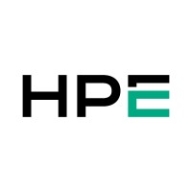

Find out what your peers are saying about Dell Technologies, Hewlett Packard Enterprise, Oracle and others in Converged Infrastructure.


FlexPod XCS is the secure platform your applications need from edge to cloud. Easily manage your suite of cloud-native, edge, and enterprise apps. Integrate advanced cloud services without compromising performance, security, reliability, or scale.
HPE StoreVirtual storage ensures that organisations can optimise the benefits of server virtualisation with cost-effective high availability and disaster recovery. The iSCSI-based, scale-out storage platform is easy to manage and change – meeting ongoing business demands without creating IT bottlenecks or application downtime. Overcoming the cost and management limitations of traditional storage area networks (SANs), HPE StoreVirtual nodes use storage clustering to form a single pool of resources that enable organisations to buy only what they need today, scaling non-disruptively to meet requirements in the future.
We monitor all Converged Infrastructure reviews to prevent fraudulent reviews and keep review quality high. We do not post reviews by company employees or direct competitors. We validate each review for authenticity via cross-reference with LinkedIn, and personal follow-up with the reviewer when necessary.